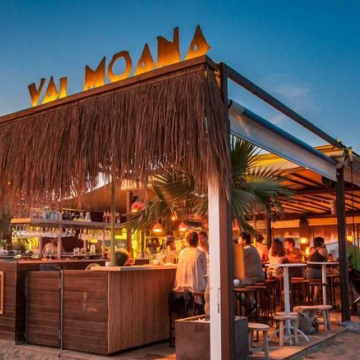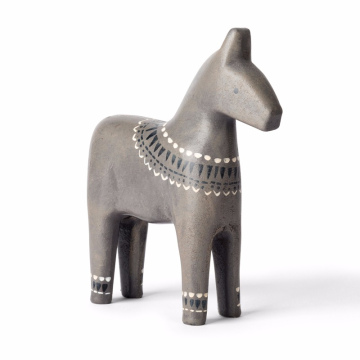A Cultural Tapestry: Spain's Rich Heritage
Spain's cultural landscape is a remarkable tapestry woven from the threads of various civilizations that have occupied and influenced the region over centuries. The legacy of the Romans, who established a vast empire that spanned the Iberian Peninsula, can still be seen today in the architectural remnants of aqueducts, amphitheaters, and roads. Their contributions laid the groundwork for urban development, governance, and infrastructure, which continue to influence the nation.
Equally significant are the Moors, whose presence in Spain from the 8th to the 15th century left an indelible mark on various aspects of Spanish culture. The architectural wonders of Alhambra in Granada and the intricate designs found in mosques and public buildings serve as testaments to their artistic and scientific advancements. The philosophical and cultural exchanges during this period fostered a rich environment where mathematics, medicine, and literature thrived. The blending of their culture with the indigenous practices birthed a unique identity that resonates in Spain today.
The Visigoths, who ruled before the Moors, also played a crucial role in shaping the early medieval Spanish identity. Their influence is evident in certain linguistic developments and legal codes that amalgamated with Roman traditions, setting the stage for the unification of Spain. The diverse cultural components, such as language and regional dialects, highlight the complexity of Spain’s identity, showcasing a nation that is not homogenous but rather an intricate ensemble of histories and traditions.
Modern Spain celebrates its cultural richness through traditional festivals, vibrant dances like flamenco, and renowned literary works. Events such as the San Fermín festival in Pamplona reflect a communal spirit and deep-seated traditions, embodying the passionate essence of Spanish culture. As Spain continues to evolve, its multicultural past remains a vibrant foundation that informs contemporary society, enriching its cultural expression and societal norms.
Breathtaking Landscapes: Natural Wonders of Spain
Spain is a country renowned for its remarkable geographical diversity, offering a plethora of breathtaking landscapes that cater to nature enthusiasts and adventure seekers alike. From the sun-kissed beaches of the Costa del Sol to the majestic snow-capped peaks of the Pyrenees, Spain's natural wonders are nothing short of captivating. These varied terrains not only provide stunning vistas but also host a rich array of flora and fauna.
One of the jewels of Spain's natural heritage is its national parks. Picos de Europa, located in the northern region, boasts dramatic limestone peaks and deep gorges, making it a prime destination for hiking and rock climbing. The park is home to diverse wildlife, including the Cantabrian brown bear, which is emblematic of the region's rich biodiversity. In contrast, Doñana National Park in Andalusia represents a unique ecosystem, blending wetlands and heathlands. Recognized as a UNESCO World Heritage site, it serves as a crucial stopover for migratory birds, offering a sanctuary for many endangered species.
Spain’s distinct climates bring forth an array of natural formations, each with their own charm. The surreal Tabernas Desert, located in Almería, showcases arid landscapes reminiscent of the Wild West, while the lush greenery of Galicia, marked by its verdant hills and coastline, stands in stark contrast. This diversity invites a variety of outdoor activities, such as kayaking in the Rías Baixas, hiking in the Sierra Nevada, or exploring the scenic trails of the Basque Country.
In addition to offering diverse recreational pursuits, these landscapes reflect the country's rich cultural heritage. The interplay between nature and local traditions can be seen in rural festivals, artisanal practices, and a strong communal appreciation for the environment. Spain’s breathtaking landscapes truly provide a compelling backdrop for all those looking to embrace nature's beauty.
Historic Marvels: Spain's Architectural Masterpieces
Spain is renowned for its diverse and rich architectural heritage, which reflects centuries of cultural influences and artistic expression. From the intricate designs of Gothic cathedrals to the avant-garde innovations of modernism, the architectural masterpieces of Spain captivate both residents and visitors alike. Among the most celebrated structures is the Alhambra in Granada, a stunning example of Moorish architecture. This UNESCO World Heritage Site, originally built as a fortress in the mid-13th century, features elaborate stucco work, serene gardens, and breathtaking views of the Sierra Nevada mountains. The Alhambra not only symbolizes Islamic artistry in Spain but also represents the intricate blend of cultures that define the country's historical narrative.
Another iconic landmark, the Sagrada Familia in Barcelona, showcases the genius of architect Antoni Gaudí. This basilica, still under construction since 1882, combines elements of Gothic and Art Nouveau styles, embodying a unique vision that is both organic and sculptural. The Sagrada Familia is not only a significant religious site but also a global symbol of artistic innovation, recognized as a UNESCO World Heritage Site for its pioneering design.
Additionally, the Alcázar of Seville exemplifies the rich tapestries of Spain’s past. Originally a fortress in the 10th century, this architectural marvel represents a fusion of Islamic, Mudejar, Gothic, Renaissance, and Baroque styles. The Alcázar is a testament to the artistic evolution and enduring legacy of Spanish architecture, playing a vital role in the country’s cultural heritage. The preservation of these historic landmarks is essential for future generations. As stewards of Spain's architectural history, it is paramount to recognize the stories each structure tells, maintaining their integrity as cultural icons while embracing the narratives they present.
Culinary Delights: The Flavors of Spain
Spain is renowned for its diverse culinary landscape, which reflects a rich tapestry of regional traditions, ingredients, and cultural influences. Each region of Spain showcases its unique flavors, resulting in a plethora of traditional dishes that are deeply rooted in the local heritage. Among the most iconic foods that characterize Spanish cuisine are tapas, paella, and jamón ibérico. These dishes not only satisfy the palate but also embody the communal spirit of Spanish dining culture.
Tapas, small plates of food, trace their origins back to the habit of covering drinks to protect them from flies or dust, with a slice of bread or meat. Over time, this evolved into a variety of delicious appetizers meant to be enjoyed with friends and family. The simplicity and adaptability of tapas allow for an extensive range of ingredients, from olives and cheeses to seafood and meats, making them a perfect introduction to Spain’s culinary diversity.
Paella, originating from Valencia, is another hallmark of Spanish gastronomy. Traditionally made with rice, saffron, and a variety of proteins such as chicken, rabbit, or seafood, each region has its unique take on the dish. The communal preparation and enjoyment of paella mirror the importance of community in Spanish culture, often bringing families and friends together during special occasions.
Jamón ibérico, a prized cured ham, stands as a symbol of Spain’s gastronomic excellence. Produced primarily in the Iberian Peninsula, its rich flavor and character are attributed to the acorn-fed pigs that contribute to its distinct taste. This delicacy serves not only as a testament to Spain's artisanal methods but also highlights the importance of quality ingredients in Spanish cuisine.
Spain’s wine culture is equally significant, with regions such as La Rioja and Priorat known for their exceptional wines. Spain produces a wide range of wines, from robust reds to crisp whites, often enjoyed alongside meals. The wine regions contribute to the culinary experience, offering tastings that complement the country’s rich gastronomic offering.
Food in Spain is more than sustenance; it is a celebration of shared moments and cultural heritage, allowing visitors to connect with the country's deep-rooted traditions through its flavors.








